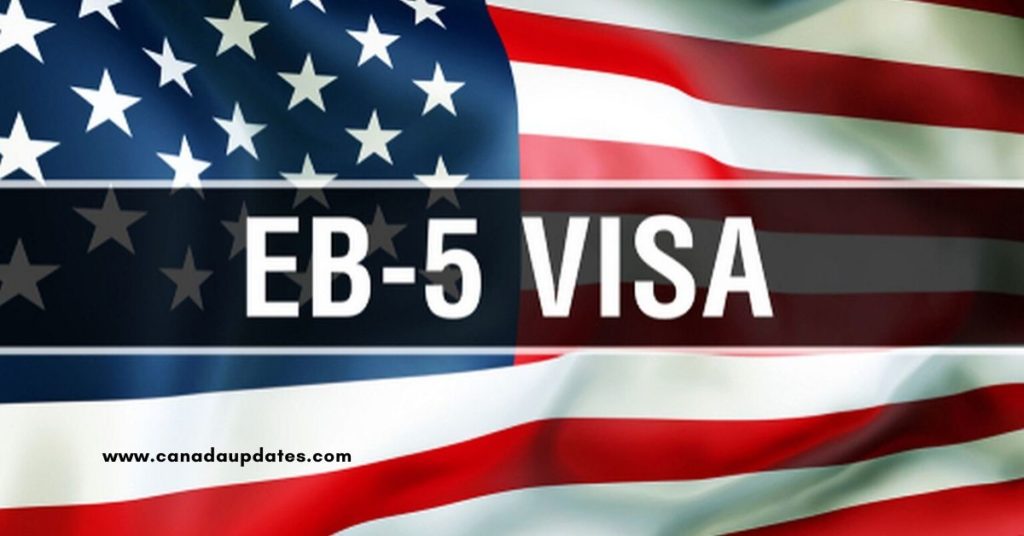EB-5 is a 1990 U.S. visa programme that requires international investors to receive a U.S. Visa by investing in a company that supports and generates opportunities for the U.S. economy.
The EB-5 visa is a channel which helps to obtain the green card and permanent residency. It helps foreigners to invest in a U.S. company to receive a green card, and eventually, the permanent residency is provided to get the citizenship of the United States.
It leads to a green card for an investor to live and work permanently in the United States with spouse and unmarried children under 21 years of age. The U.S. Citizenship and Immigration Services (USCIS) runs the EB-5 Visa Program.
The initiative was set up by the United States Congress in 1990 to promote increased investment in the U.S. economy.
Requirements of the EB5 Visa
To meet the EB-5 visa requirements, international investors must make an “at-risk” capital investment in a U.S. non-profit company. The amount of investment needed is either $900,000 or $1.8 million, depending on the project you are participating in.
When you invest in a targeted employment area (TEA), the cost is $900,000, and if you spend elsewhere, the total investment needed is $1.8 million. Investments in EB-5 will contribute to the development of 10 full-time U.S. opportunities for at least two years.
Application Process for Getting EB5 Visa
The following are the processes involved in getting the EB5 Visa.
Finding an EB5 Project for Investment
The applicant for EB-5 should find a suitable project to invest in. In general, EB-5 business ventures take the form of either new commercial companies or local core ventures.
Overseas immigration consultants enable EB-5 investors to find a project that best fits their needs.
Applicants must also ensure that they comply with the certified investor income criteria to progress forward with the EB-5 process.
Investment in Capital and-526 Application
Following the selection of the investment project, the applicants must make the necessary capital expenditure sum for the endeavour they have selected.
The expenditure must be $1.8 million, or $900,000 unless the project is located in the Targeted Job Area (TEA). All such investments are also made in the Escrow account.
The Immigration Attorney then offers evidence of this investment by filing an I-526 petition with the USCIS. U.S.CIS regularly reminds applicants whether or not their I-526 request was approved after 31 to 52 months.
All the local centres are subjected to reimburse your investment if the appeal of I-526 is declined.
Conditional Permanent Residency For Two Years
The third phase of the EB-5 approval process for the applicant to become a two-year conditional citizen of the United States so that they can undertake a project financed by their EB-5 investment.EB-5 stakeholders shall be entitled to become U.S. citizens after the USCIS has accepted their I-526 petition. A residence permit can be done in one of several ways:
- When an applicant in EB-5 already has legal status in the United States, he should apply form-485 to change the eligibility to a conditional legal resident.
- When an applicant does not already have legal status in the United States, he must apply for an immigrant visa by sending a DS-260 application to the National Visa Center. They must process it from the U.S. consulate in their home country.
- Such two phases typically require the help of an immigration lawyer, and an immigrant visa is granted in between six to twelve months. During the two-year conditional residence period, the applicant is expected to meet the physical appearance criteria and can not live outside the United States for more than one year without receiving a re-entry permit.
I-829 Appeal and Unrestricted Permanent Residency
The last stage in the EB-5 application process is for applicants to become unrestricted permanent residents by withdrawing existing two-year conditional status.
The I-829 petition is sent to the USCIS 90 days before the second anniversary of the date on which the applicant first obtained their conditional residence. The whole application ensures that the applicant has met with all the criteria of the EB-5 Visa Policy. USCIS grants a permanent green card 22 to 45 months after the I-829 has been submitted.
The applicant, their spouse and their dependent children under the age of 21 may then stay and continue to work permanently in the United States and can apply to become U.S. citizens after a period of five years from the date of their formal conditional residency.
How Often EB-5 Visas are Granted Every Year?
USCIS holds about 10,000 visas for EB-5 applicants per calendar cycle. There is an increase in the number of EB-5 programme applicants since 2011.
The extension can be attributed to increased faith in the system due to USCIS openness, consistency in the application process and growth in the number of regional centres established across the United States.

